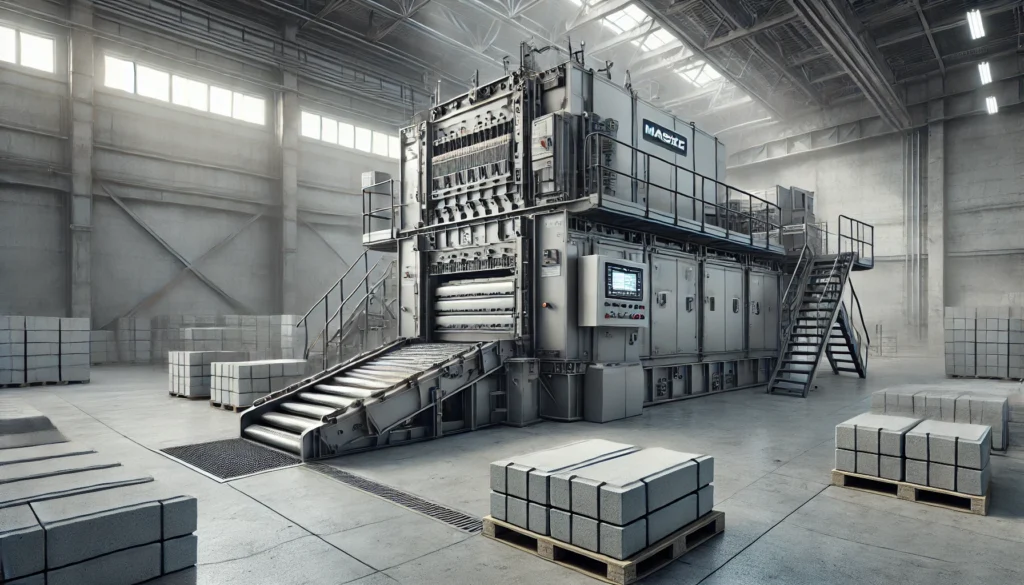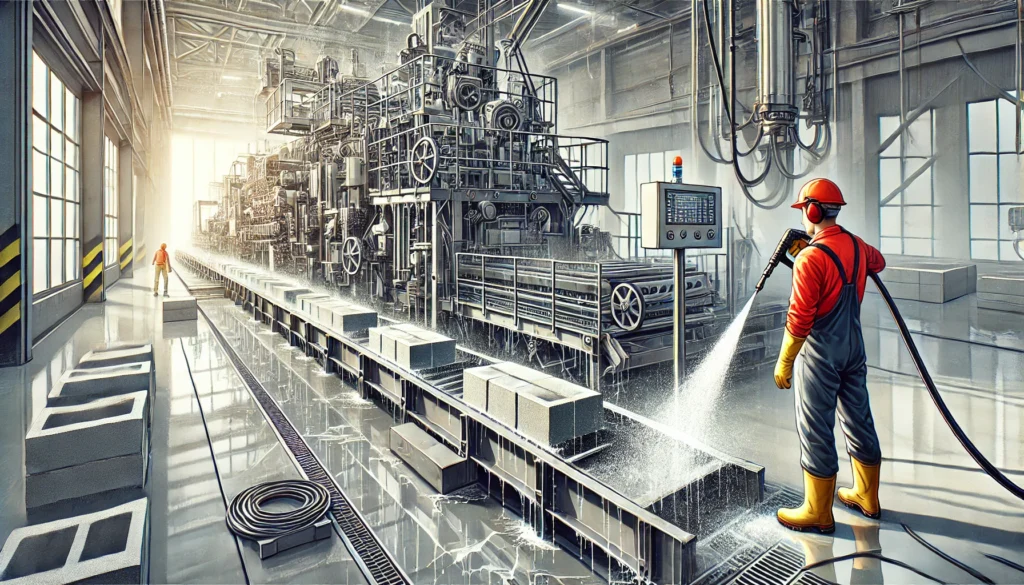Ever wondered why your concrete block machine isn’t performing at its best? If you’re a construction professional or factory worker, you know how crucial these machines are to keeping production on track and projects moving forward. Like any other heavy equipment, concrete block machines are prone to dirt and buildup, which can lead to downtime, lower efficiency, and costly repairs. That’s where a proper cleaning regimen comes in.
Cleaning a concrete block machine might sound like an intimidating task, especially given the complex mechanics and sheer weight of these machines. But here’s the good news: with the right know-how, a few tools, and a little time, you can master the process. In this guide, we’ll break down every step in a simple, easy-to-follow format that helps you keep your machine in peak condition without unnecessary hassle.
This guide will walk you through a step-by-step cleaning process, explaining what you need to do, how to do it, and why each step matters. We’ll even throw in some expert tips, common mistakes to avoid, and troubleshooting tips for those stubborn spots. With this knowledge, you’ll save on repair costs, keep production rolling smoothly, and extend the life of your concrete block machine.

Step-by-Step Instructions
Step 1: Preparation and Safety First
What to Do: Before you dive into the cleaning process, make sure to power down and secure the machine to prevent any accidental starts.
How to Do It:
- Power Down Completely: Ensure the machine is disconnected from any power sources. Remove any key or switch that could inadvertently start the machine.
- Wear Protective Gear: Equip yourself with gloves, eye protection, and a mask. Concrete dust can irritate your skin, eyes, and respiratory system.
- Gather Necessary Cleaning Supplies: Have all your supplies ready, including a stiff brush, detergent, rags, a pressure washer (if available), and cleaning solvent.
Why It Matters: Safety should always come first, especially with machinery that has complex moving parts. Ensuring the machine is powered down prevents injuries, while protective gear keeps you safe from debris, dust, and chemicals.
Pro Tip: If this is the first time you’re cleaning a concrete block machine, make sure to have the machine’s user manual nearby. It often includes helpful information on cleaning procedures and areas that need special attention.
Step 2: Remove Loose Dirt and Debris
What to Do: Use a brush or air compressor to remove dust, cement, and other debris that’s accumulated on the surface and within crevices.
How to Do It:
- Start with a Dry Brush: Use a stiff brush to sweep away loose dirt and dust.
- Compressed Air (Optional): For more efficient dirt removal, an air compressor works wonders, especially for those hard-to-reach nooks and crannies.
Why It Matters: Loose dirt can scratch the machine’s surface, clog moving parts, and even damage electrical components. By removing loose debris first, you make the subsequent cleaning steps more effective.
Pro Tip: Pay extra attention to any exposed gears or control panels. Dust buildup around these parts can impair machine functionality over time.
Step 3: Apply Cleaning Solution
What to Do: Use a mild detergent solution to clean off tougher grime and oil residues that might have built up.
How to Do It:
- Mix the Solution: Dilute a mild detergent with water. Avoid using harsh chemicals that could erode metal components or cause rust.
- Apply Generously: With a cloth or spray bottle, apply the solution to the surfaces.
- Scrub: Use your brush to gently scrub areas with stubborn stains. For tight spaces, use a smaller brush or an old toothbrush.
Why It Matters: Concrete machines often accumulate oily grime that doesn’t come off with dry brushing alone. The detergent helps break down this layer, ensuring a more thorough clean.
Pro Tip: If the detergent doesn’t do the trick, add a bit of degreasing agent for tougher grime, but test on a small area first to ensure it doesn’t damage the finish.
Step 4: Rinse with a Pressure Washer
What to Do: Use a pressure washer to rinse off the detergent and remove any remaining grime.
How to Do It:
- Set the Right Pressure Level: Use a low to medium pressure setting to avoid damaging delicate components.
- Rinse Thoroughly: Focus on each area until you see no more suds or residue. Pay close attention to joints and crevices where dirt likes to hide.
- Allow Drying Time: Once rinsed, allow the machine to air-dry completely or wipe it down with clean rags to speed up the process.
Why It Matters: Pressure washing not only rinses away dirt but can also remove any detergent residue that could attract more dirt if left on the machine.
Pro Tip: If you don’t have access to a pressure washer, a high-pressure garden hose can work in a pinch. Just make sure to avoid electrical parts!

Step 5: Clean Moving Parts Separately
What to Do: For areas with moving parts, such as gears and pistons, it’s crucial to clean carefully to prevent any residue from impairing functionality.
How to Do It:
- Wipe Down Manually: Use a clean cloth or brush to carefully wipe these areas without adding excessive water.
- Use Lubricant: Once clean, apply a light lubricant to each part to maintain smooth operation and prevent rust.
Why It Matters: Properly cleaning moving parts prevents wear and tear, prolonging the machine’s life. Lubricating afterward reduces friction and prepares the machine for continued use.
Pro Tip: Always follow the manufacturer’s recommendations for cleaning and lubricating moving parts to avoid over-lubrication, which can attract more dust.
Step 6: Final Inspection and Test Run
What to Do: After cleaning, conduct a thorough inspection to ensure all parts are clean, dry, and functional. Perform a test run to check that everything is in working order.
How to Do It:
- Inspect Each Part: Look for any signs of damage, loose parts, or areas that might still have dirt or grime.
- Run the Machine: Start it up briefly and check for any strange sounds or malfunctions.
- Reapply Lubricant if Needed: If you notice any sticking or grinding, apply a little extra lubricant.
Why It Matters: The inspection ensures that your cleaning efforts haven’t compromised the machine’s functionality, while the test run helps confirm that everything is running smoothly.
Pro Tip: Keep a log of each cleaning session, noting any unusual findings or parts that may need maintenance soon. This habit can prevent small issues from becoming major problems.
Troubleshooting & Additional Tips
Common Issues & Fixes
- Stubborn Grime Spots: For areas with extra-tough grime, try using a degreasing spray. Avoid letting it sit too long, as prolonged exposure can damage metal surfaces.
- Water in Electrical Parts: If you accidentally spray near electrical components, dry them immediately with a soft cloth and allow extra drying time.
- Rust on Moving Parts: If you notice any rust, use a wire brush to remove it gently and apply a rust-resistant lubricant.
Best Practices & Tips
- Regular Cleaning Schedule: Clean your machine at least once a month or more frequently if used heavily.
- Use Manufacturer-Approved Products: Using recommended cleaning products helps avoid unexpected reactions or damage.
- Keep Cleaning Supplies Handy: Store brushes, cloths, and cleaning agents near the machine to encourage frequent maintenance.
Case Study: Preventative Maintenance Saves Time and Money
One factory reported that following a strict cleaning schedule reduced machine downtime by over 30%, saving thousands annually in repair costs. The team focused on careful cleaning of high-wear areas like gears and conveyor parts, which also boosted efficiency.
Expert Insight
“Regular cleaning isn’t just about appearance—it’s about making sure each part of the machine works smoothly. Dirt can cause significant friction, wearing parts down and causing premature failure,” says a mechanical engineer.
FAQs about How to Clean Concrete Block Machines
1. How often should I clean my concrete block machine?
A monthly cleaning is ideal for most machines, but adjust based on usage frequency.
2. Can I use any detergent?
Stick to mild, non-corrosive detergents or ones recommended by the manufacturer.
3. Is it safe to use a pressure washer?
Yes, but avoid electrical areas and use a moderate setting.
4. What if the machine doesn’t run smoothly after cleaning?
Check for any unlubricated parts or loose screws. Re-lubricate and inspect all moving parts.
Conclusion
Cleaning a concrete block machine may seem daunting, but it’s a straightforward task with the right approach. By following these steps, you’ll keep your equipment in top shape, cut down on repair costs, and keep production running smoothly. Remember, every machine requires care and attention, and with a regular cleaning routine, your concrete block machine will perform reliably for years to come.

Final Call-to-Action: Don’t let dirt and grime slow down your work! Share this guide, and let’s keep our machines in peak condition. If you found this guide helpful, check out our additional resources for more maintenance tips!
